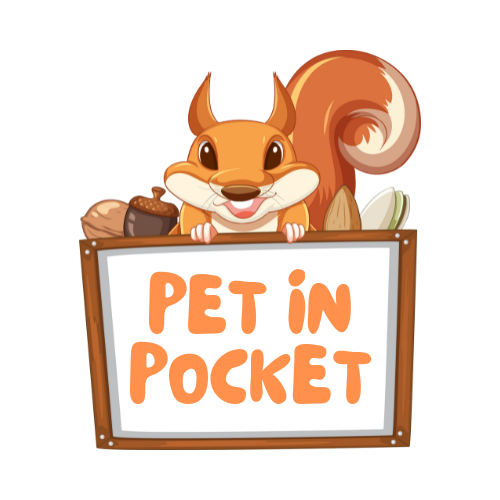Sugar gliders are adorable little creatures that make great pets. However, bonding with them can be a bit of a challenge for new pet owners. In this blog how to bond with sugar gliders, we’ll take you through everything you need to know about bonding with your sugar glider. First, we’ll help you understand their behaviors and how to observe their natural habitat to better understand them. Then, we’ll dive deeper into the signs of comfort and discomfort, so you can ensure your sugar glider feels safe and happy in your care.
Finally, we’ll provide tips on building trust with your sugar glider, including methods to approach and handle them, as well as whether they prefer certain people over others. With our expert tips and tricks, you’ll be able to bond with your sugar glider in no time!
Table of Contents
Understanding the behaviors of Sugar Glider

Sugar gliders, being social creatures, require companionship for their well-being. They communicate through a combination of sounds, body language, and scent marking, which allows them to express their needs and emotions. Bonding with sugar gliders takes time, patience, and consistency. One of the best ways to build trust and affection with these little guys is by offering treats and spending quality time playing with them. This will help them feel secure in their new home and develop a bond with their human caregivers.
Creating a safe and stimulating environment is crucial for the overall well-being of sugar gliders. Providing them with plenty of toys, branches to climb on, and hiding spots mimics their natural habitat and keeps them mentally and physically active. As nocturnal animals, sugar gliders are most active during the night time, so it’s important to respect their natural sleep patterns and avoid disturbing them during the day.
When trying to bond with sugar gliders, it’s essential to understand that they each have their own unique personality and may take different amounts of time to warm up to their new family. It’s a good idea to let them explore their new surroundings at their own pace, allowing them to get familiar with new smells and adjust to their surroundings. Dirty laundry with your scent can also help them feel more comfortable in their new environment.
In conclusion, understanding the behaviors of sugar gliders is key to successfully bonding with them. By providing a safe and stimulating environment, offering treats, and spending quality time with them, you can build their trust and create a strong bond. Remember, patience, persistence, and a bit of good luck will go a long way in developing a strong connection with these adorable creatures.
How to observe the Natural Habitat of sugar gliders
Observing sugar gliders in their natural habitat can provide valuable insights into their behavior and needs. To get a glimpse into their world, spend time in wooded areas where sugar gliders are typically found, especially during the night. Look for glider nests, which are usually built in tree hollows or crevices. These nests serve as safe havens for the little guys when they’re not exploring their surroundings.
While observing, pay close attention to their gliding patterns. Sugar gliders are skilled gliders and can cover long distances between trees. Their graceful movements are a sight to behold. Additionally, listen carefully for their unique vocalizations. They use barking, chirping, and hissing sounds to communicate with other members of their colony.
Remember, observing sugar gliders in their natural habitat requires patience and persistence. These adorable creatures have their own unique personalities and may take some time to warm up to you. Make sure to respect their boundaries and give them space to feel comfortable. By observing their natural behaviors, you can learn more about their needs and preferences, which will help you provide the best care for your own pet sugar glider.
The Signs of Comfort and Discomfort of sugar gliders
When it comes to understanding the signs of comfort and discomfort in sugar gliders, it’s important to pay close attention to their body language and behavior. A sugar glider that is in a comfortable state will display relaxed body language, with their body and tail stretched out. They may also groom themselves, their cage mates, and even their owners as a bonding process.
However, if sugar gliders feel threatened or uncomfortable, they may exhibit aggressive behavior such as biting or scratching. Another sign of discomfort or fear is when they make a crabbing sound. This sound indicates their unease and should be taken as a cue to give them space.
Creating a safe and stress-free environment is crucial for sugar gliders. Providing them with a sleeping pouch where they can retreat when they feel stressed is important. It’s also essential to remember that sugar gliders have their own unique personalities, so they may have different comfort levels and preferences.
Building trust with sugar gliders takes time and patience. It’s important to approach them slowly and allow them to set the pace of interaction. Spending time with them consistently and offering treats can help them feel more comfortable and build trust over time. Remember, bonding with these little guys is a journey that requires persistence and understanding.
In conclusion, observing the signs of comfort and discomfort in sugar gliders is vital to their well-being. By understanding their body language and behavior, providing a safe space, and building trust at their own pace, you can ensure that your sugar glider feels secure and comfortable in their new home. Good luck with your bonding journey!
Proven Techniques for Bonding with Sugar Gliders

Building trust is crucial when it comes to bonding with sugar gliders. These tiny creatures can be initially shy and cautious, so creating a safe and welcoming environment is essential. Spend quality time with your sugar glider in a quiet and calm space to encourage trust. Offer treats like yogurt to associate your presence with positive experiences, helping to build a strong bond.
To further foster trust, consider using a bonding pouch. This pouch allows you to carry your sugar glider close to your body, allowing them to become familiar with your scent and presence. It’s a great way to create a sense of security for your sugar glider and strengthen your connection.
Patience is key during the bonding process. It takes time for sugar gliders to feel comfortable and develop trust. Let them set the pace and avoid rushing the process. Remember, each sugar glider has its own unique personality, and bonding may take longer for some than others. Take it one step at a time and enjoy the journey of building a strong bond with your sugar glider.
In summary, when bonding with sugar gliders, focus on building trust through a calm and quiet environment. Use treats and a bonding pouch to associate positive experiences with your presence. Patience is key, allowing your sugar glider to set the pace for the bonding process. By following these proven techniques, you’ll create a strong and lasting bond with your furry friend.
Establishing a Trusting Relationship
Establishing a trusting relationship with your sugar glider is crucial for building a strong bond. To achieve this, it’s important to spend quality time bonding with your furry friend during the daytime. Since sugar gliders are more active at night, engaging with them during their natural awake hours can help foster a deeper connection.
When interacting with your sugar glider, be mindful of their sensitivity to sudden movements and loud noises. Avoid handling them roughly as it can cause them stress and potentially damage the trust you are trying to build. Instead, approach them with gentleness and patience.
One effective way to develop trust is by offering bonding pouches, sleeping pouches, or dirty laundry with your scent. This familiar scent can provide comfort to your sugar glider and help them associate your presence with safety and security. Additionally, gradually introducing new surroundings, smells, and family members allows your sugar glider to adjust at their own pace, reducing any potential anxiety they may feel.
Another aspect of building a trusting relationship involves regular vet check-ups and grooming sessions. These activities not only ensure the health and well-being of your sugar glider but also provide opportunities for positive interactions and reinforcement of the bond between you and your pet.
Remember, bonding takes time, and each sugar glider has its own unique personality. Be patient, consistent, and understanding throughout the process. By following these techniques and nurturing your glider’s trust, you can establish a strong and loving relationship that will last for a long period of time.
What should you do if your sugar glider is not bonding well?
If your sugar glider is having trouble bonding, there are a few things you can try. Use bonding pouches during the day, spend time with them in a quiet space, and offer treats like yogurt to build trust. Remember, bonding takes time and patience.
How to build Trust with Your Sugar Glider

To build trust with your sugar glider, it’s essential to spend time bonding with them regularly. This allows them to become familiar with your scent and presence. Here are some dos and don’ts to keep in mind when bonding with your sugar glider:
Dos:
Don’ts:
Remember that each glider has its own unique personality and may take a different amount of time to trust you fully. It’s important to be patient and allow them to progress at their own pace. Creating a bond with your sugar glider requires time and effort, but with some patience and the right approach, you’ll be able to build a strong bond based on trust. The bond you create with your glider will be rewarding for both of you and will help foster a deep and lasting connection.
Frequently Asked Questions
How long does it take to bond with a sugar glider?
Bonding with sugar gliders can take anywhere from a few weeks to a few months. It depends on the individual glider’s personality and their previous experiences with humans.
What should I feed my sugar glider to help with bonding?
Offering treats like fresh fruits and vegetables can help strengthen the bond between you and your sugar glider. However, make sure to also provide a balanced diet of pellets and protein sources.
Can sugar gliders bond with multiple people?
Yes, sugar gliders can bond with multiple people. However, they may have a stronger bond with one or two individuals that they spend the most time with.
How can I play with my sugar glider and bond at the same time?
Playing with your sugar glider through interactive toys and games can be a fun way to bond. Make sure to supervise playtime and avoid roughhousing.
Can sugar gliders bond with other pets?
It is possible for sugar gliders to bond with other pets, but it requires careful introduction and supervision. It is important to remember that sugar gliders are prey animals and may feel threatened by larger animals.
Conclusion
In conclusion, bonding with sugar gliders requires understanding their natural behaviors and building trust over time. Observing their natural habitat can provide valuable insights into their preferences and comfort levels. It is important to approach and handle them with care, allowing them to become familiar with your scent and touch.
Remember that each sugar glider is unique, and they may have preferences for certain individuals. Patience, consistency, and positive reinforcement are key to developing a strong bond with your sugar glider.






Leave a Reply